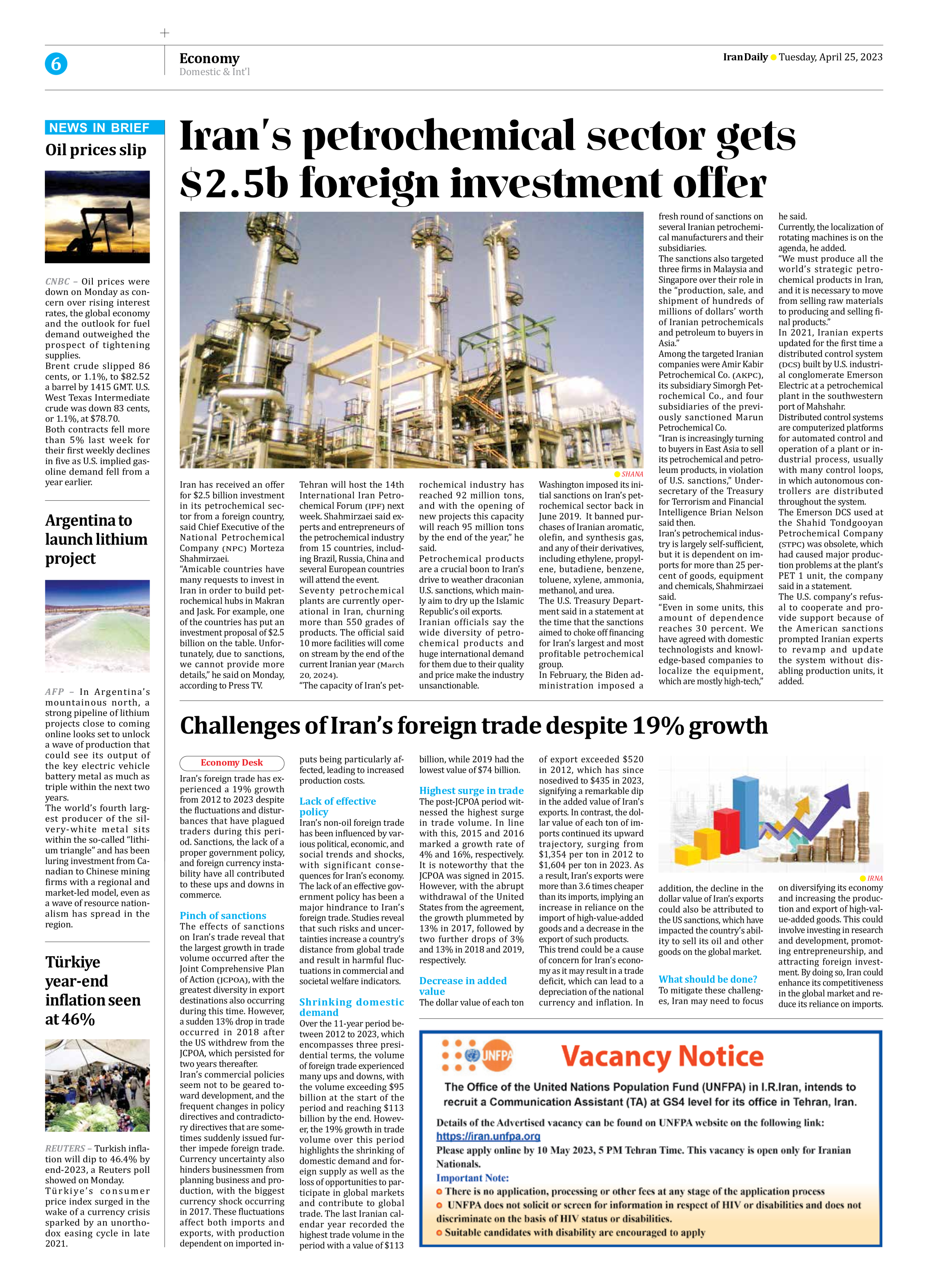
Challenges of Iran’s foreign trade despite 19% growth
Iran’s foreign trade has experienced a 19% growth from 2012 to 2023 despite the fluctuations and disturbances that have plagued traders during this period. Sanctions, the lack of a proper government policy, and foreign currency instability have all contributed to these ups and downs in commerce.
Pinch of sanctions
The effects of sanctions on Iran’s trade reveal that the largest growth in trade volume occurred after the Joint Comprehensive Plan of Action (JCPOA), with the greatest diversity in export destinations also occurring during this time. However, a sudden 13% drop in trade occurred in 2018 after the US withdrew from the JCPOA, which persisted for two years thereafter.
Iran’s commercial policies seem not to be geared toward development, and the frequent changes in policy directives and contradictory directives that are sometimes suddenly issued further impede foreign trade. Currency uncertainty also hinders businessmen from planning business and production, with the biggest currency shock occurring in 2017. These fluctuations affect both imports and exports, with production dependent on imported inputs being particularly affected, leading to increased production costs.
Lack of effective
policy
Iran’s non-oil foreign trade has been influenced by various political, economic, and social trends and shocks, with significant consequences for Iran’s economy. The lack of an effective government policy has been a major hindrance to Iran’s foreign trade. Studies reveal that such risks and uncertainties increase a country’s distance from global trade and result in harmful fluctuations in commercial and societal welfare indicators.
Shrinking domestic demand
Over the 11-year period between 2012 to 2023, which encompasses three presidential terms, the volume of foreign trade experienced many ups and downs, with the volume exceeding $95 billion at the start of the period and reaching $113 billion by the end. However, the 19% growth in trade volume over this period highlights the shrinking of domestic demand and foreign supply as well as the loss of opportunities to participate in global markets and contribute to global trade. The last Iranian calendar year recorded the highest trade volume in the period with a value of $113 billion, while 2019 had the lowest value of $74 billion.
Highest surge in trade
The post-JCPOA period witnessed the highest surge in trade volume. In line with this, 2015 and 2016 marked a growth rate of 4% and 16%, respectively. It is noteworthy that the JCPOA was signed in 2015. However, with the abrupt withdrawal of the United States from the agreement, the growth plummeted by 13% in 2017, followed by two further drops of 3% and 13% in 2018 and 2019, respectively.
Decrease in added
value
The dollar value of each ton of export exceeded $520 in 2012, which has since nosedived to $435 in 2023, signifying a remarkable dip in the added value of Iran’s exports. In contrast, the dollar value of each ton of imports continued its upward trajectory, surging from $1,354 per ton in 2012 to $1,604 per ton in 2023. As a result, Iran’s exports were more than 3.6 times cheaper than its imports, implying an increase in reliance on the import of high-value-added goods and a decrease in the export of such products.
This trend could be a cause of concern for Iran’s economy as it may result in a trade deficit, which can lead to a depreciation of the national currency and inflation. In addition, the decline in the dollar value of Iran’s exports could also be attributed to the US sanctions, which have impacted the country’s ability to sell its oil and other goods on the global market.
What should be done?
To mitigate these challenges, Iran may need to focus on diversifying its economy and increasing the production and export of high-value-added goods. This could involve investing in research and development, promoting entrepreneurship, and attracting foreign investment. By doing so, Iran could enhance its competitiveness in the global market and reduce its reliance on imports.







